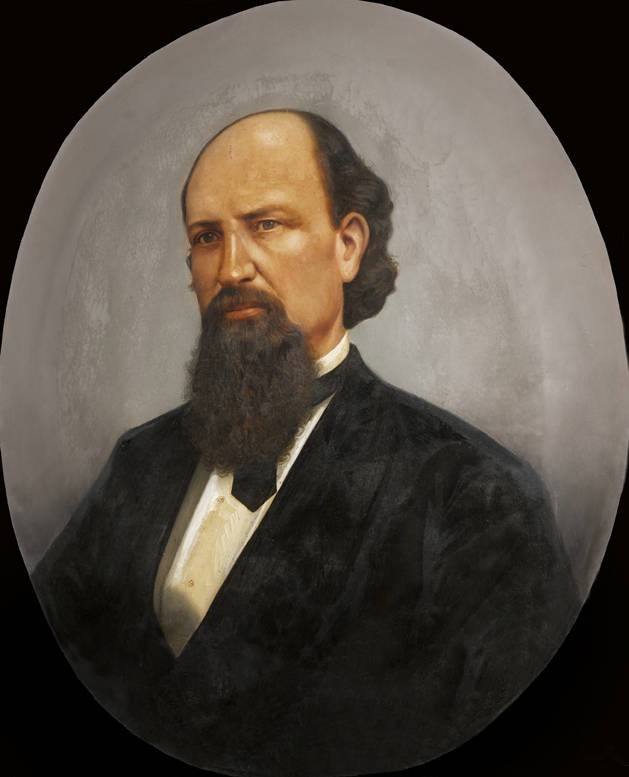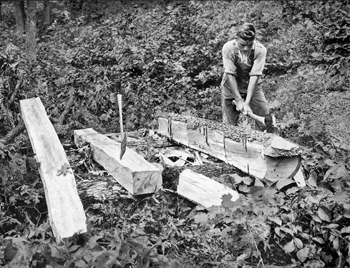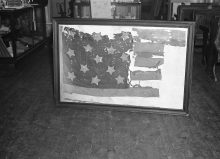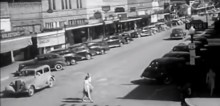“Willis Valley Railroad was charted in February 3, 1852 as a company to build a railroad from the point on the Alabama & Tennessee River Railroad, at or near the farm of JAMES HAMPTON through the county of Dekalb and the Georgia line to intersect the Georgia and Tennessee Railroad at some convenient point in Lookout Valley.
The men involved in forming the company for this enter were MESSRS. HUMPHREY McBRAYER, WILLIAM P. SCOTT, LEWIS REA, THOMAS G. A. COX, RICHARD RAMSEY, CHARLES STOWERS, A. J. CHANEY, THOMAS A. PATRICK, SAMUEL M. NICHOLSON, OBEDIAH W. WARD, M. C. NEWMAN, ALFRED COLLINS, CHARLES D. GEORGE, STEPHEN McBROOM, A. J. WARD, REUBEN EATES, JOHN G. WINSTON, JOHN M. BRUCE, JOHN M. LANKFORD, JESSE G. BEESON, JOSEPH DAVENPORT, HIRAM ALLEN, V. C. LARMORE, WILLIAM O. WINSTON, JACOB BEENE, B. F. PORTER, JOHN J. HUMPHRIES, GEORGE W. WHITE, GAINES BLEVINS, DANIEL B. BUCKHALTER AND JACOB PUTNAM of De Kalb County. The capital stock was $300,000 in shares of $50 each, materials, labor and supplies needed in the construction of a railroad to be receivable in stock subscriptions, but the exercise of banking powers, and “the issue of any description of paper or any evidences of debt intended as circulation” were expressly prohibited.
February 2, 1856 the charter was amended to permit the consolidation of the company with any other company and an act of February 6, 1858, authorized the company to consolidate with or sell its franchise and property to the North-East & South-West Alabama Railroad Co. No part of the road charted was built prior to the War, and there is nothing to show that any part of it was surveyed or graded.
Mass Meetings held to discuss project
During the early part of 1853, some of the more enterprising citizens of the western counties began to advocate the construction of a railroad through those counties to connect the Mobile and Ohio Railroad which was under construction, with some road projected from the eastern boundary of the State to Knoxville, Tennessee. The connecting railroad would pass through Sumter, Greene, Tuscaloosa and Jefferson Counties and then turn in a northeasterly direction to the Alabama State line. Conventions, mass meetings, and barbecues were held to create interest in the project during the summer of 1853.
During the summer meetings were held at Livingston, Sumter County, Elyton, (the county seat of Jefferson at the time), Sumterville, Sumter County, and a large meeting in Tuscaloosa that was attended by delegates from Autauga, Bibb, Marshall, Jefferson, Tuscaloosa, Pickens, Greene, Sumter, Lowndes and Noxubee County in Mississippi. The meeting was presided over by PROF. GARLAND of the University of Alabama. The meetings stimulated interest and in October when stock subscriptions were solicited in the towns along the proposed route, a large part of the required funds was obtained within a few days.
The legislature granted a charter Dec. 12, 1853 to the North-East & South-West Alabama Rail Road Co. The men involved in the company were JAMES HAIR, W. WALDO SHEARER, STEPHEN M. POTTS, SAMUEL M. GOWDY, SAMUEL L. CRESWELL, FREDERICK MERRIWEATHER, ALFRED BATTLE, JAMES H. DEARING, THOMAS MAXWELL, WILLIAM S. MUDD, JAMES McADORY, JAMES HENDRIX, JOHN W. McRAE, THOMAS C. BARCLAY, ARTHUR C. BEARD, JOHN I. THOMASON, and ROBERT MURPHY.
The route for the rail road was from some point on the line be line between the States of Alabama and Mississippi, in the direction of Marion, Lauderdale, County, Mississippi, or the point of intersection of the Southern Rail Road with the Mobile and Ohio Rail Road. It would go through the corporate limits of Livingston, Sumter county then cross the Tombeckbee river at or near Bluff Port and through the cooperate limits of Eutaw in Green County and through the corporate limits of the city of Tuscaloosa. From there it would go through the town of Elyton, in Jefferson County and take a northeasterly direction to connect with some one or more or the rail roads leading to Knoxville, Tennessee. A stipulation was made that the route should not extend to the south or east of the Coosa River. The capital stock for the enterprise was $7,000,000 in shares of $100 each to be increased to $8,000,000 if necessary.
E. R. SANFORD was made the chief engineer at a meeting in Eutaw January 18, 1854. However, some misunderstandings arose amongst the subscribers to the stock regarding the relative value of cash and labor contributions and to settle the controversy, the directors appealed to the legislature to pass a law upon the subject. An amendment to the charter was passed Feb. 17, 1854, which conferred upon the board of directors the power to equalize the cash and labor subscriptions by any means necessary.
Grading Done with Slave Labor
The grading of the North-East & South-West Alabama Railroad was done by slave labor, contributed in lieu of cash subscriptions to the capital stock by the wealthy citizens alone the route. On Feb. 6, 1858, an act was passed to authorize the consolidation of this company with the Willies Valley Railroad but the merger was not effected before 1861.
A considerable portion of the roadbed had been made ready for the railroad before war began, but pressing duties from the war on the plantation and in the army took precedence on continued work. When the War ended, the grading had so deteriorated as to be virtually useless so the North-East and South-West Alabama Railroad only existed on paper and the Willis Valley Railroad never really had any sort of existence.
Renewed Interest After the War
In 1865, the owners of the franchises applied to the legislature for authority to sell their holdings and permission was given by an act on December 9. Soon after the War Between the States, interest was restored for State aid to build railroads and in 1867 the legislature passed an act “To establish a sysem of Internal improvements in the State of Alabama.” The act provided that the governor should endorse on behalf of the State at the rate of $12,000 per mile, the first mortgage bonds of any railroad company which should complete and equip 20 continuous miles of road, and so on for each block of 20 miles completed, provided that no bonds so endorsed should be sold for less than 90 cents on the dollar.
In 1867 or 1868 possession of the franchises of the Willis Valley Railroad Co., and of the franchises and property of the North-East and South-West Alabama Railroad was obtained by capitalists headed by JOHN C. STANTON, of Boston, who obtained from the legislative an act increasing the charter rights of the former company to cover the construction of a line to Elyton, and to permit the consolidation of the Willis Valley with any other company. Another act of the same legislature amended the internal improvement law so as to reduce the mileage requirement from 20 to 5. At the next session another amendment increased the rate of endorsement to $16,000 a mile, and made the lines of Alabama companies in other States eligible to endorsement.
Seizure of the Railroad
An act of October 5, 1868, authorized the consolidation of the above-mentioned companies as the Alabama & Chattanooga Railroad Co. Subsequent acts amending details of the charters of one or both of these companies were passed November 17 and 28, 1868. An act of February 11, 1870, authorized the loan of $2,000,000 in State bonds to the Alabama & Chattanooga Railroad Co. The Railroad defaulted in interest on its bonds in January, 1871. Upon recommendation of the governor, acts were passed, February 25, and March 8, 1871, authorizing the payment of interest on $400,000 of the bonds from the State. In July 1871, JOHN H. GIUDRAT was commissioned to seize the entire road, which had not been operated for two weeks previous.
The seizure did not meet with the approval of all parties in the State. Many opposed it on the score that the State would thereby admit the liability on the bonds. Some advocated repudiation of the entire amount of bonds authorized by the “reconstruction legislatures,” upon the ground that they had been fraudulently issued, and did not constitute an honest obligation of the people of the State. However, regardless of the questions of the legality of the bonds, the State was admitted to have acknowledged its obligation by the seizure of the road.
The total valuation of the road within the State, with its rolling stock and other equipment, as fixed by the state board of equalization was $2,366,040. The message of Gov. Smith to the legislature, with which the auditor’s report was submitted, stated that he had endorsed the road’s bonds for 250 miles at $16,000 per mile, $4,000,000 and that he had also delivered the $2,000,000 in bonds loaned by the State.
Governor Protects the Credit of the State
“The original State-aid law required that a company which received the endorsement of the State should deposit with the State comptroller, “at least fifteen days before the interest on such bonds became due, ” an amount sufficient to pay the interest, including exchange and necessary commissions, or “satisfactory evidence that such interest had been paid or provided for.” In January, 1871, default was made in the payment of the semi-annual interest due at that time. The governor promptly announced his intention to protect the credit of the State, the decision meeting popular approval.

Official portrait of Robert Burns Lindsay, twenty-second governor of Alabama
On February 24 the house passed the first of a series of acts on the subject, which directed the governor to investigate the validity of the bonds, and authorized him to pay the interest on those found to have been held by bona fide innocent purchasers on January 1, 1871. In March, GOV. LINDSAY went to New York to conduct the investigation and to arrange for funds to make interest payments. Upon his return he reported that he had agreed to pay the interest on the first four thousand of the endorsed bonds and the two thousand State bonds, all others being rejected as fraudulent.
About this time it was given out by the STANTONS that, “on account of annual expenses in dressing up the track,” the company would issue bonds for the next year’s interest charges instead of paying them in cash. Shortly after this information was vouchsafed the public, COL. W. A. C. JONES, of Sumter County, a creditor of the road of $16,000, petitioned the United States District Court at Montgomery to declare the company as involuntary bankrupt; and before the news of the pending proceedings had reached the public, JUDGE RICHARD BUSTEED had issued the decree, appointed receivers, and placed the road in the hands of the United States marshal.
“At this time the indebtedness of the company aggregated $13,528,720; its estimated annual interest charges, $1,190, 417. The actual cost of the road could not be ascertained, but it was believed to have been considerably less than its bonded indebtedness.”
(continued in Part II)
SOURCE
History of Alabama and Dictionary of Alabama Biography by Thomas McAdory Owen and Marie Bankhead Owen published in 1921 by S. J. Clarke Publishing
ALABAMA REVOLUTIONARY WAR SOLDIERS VOLUME II
After
the Revolutionary War, free bounty land was offered by the federal
government to citizens and soldiers for their service.
This
book is the 2nd Volume in a series of books which includes
genealogical and biographical information on some Revolutionary
Soldiers who were in early Alabama and/or collected military pensions
for their service. Some of their descendants still remain on the
bounty land they received. The soldiers in this volume include: JACOB
HOLLAND, CHARLES M. HOLLAND, THOMAS HOLLAND, COL. JOSEPH HUGHES,
CHARLES HOOKS, DIXON HALL, BOLLING HALL, WALTER JACKSON, WILLIAM
HEARNE, THOMAS HAMILTON, GEN. JOHN ARCHER ELMORE, REVEREND ROBERT
CUNNINGHAM, JAMES COLLIER, THOMAS BRADFORD, REUBEN BLANKENSHIP, HENRY
BLANKENSHIP, DANIEL BLANKENSHIP with a special story about the
patriotism of CHARLES HOOKS sister…MARY HOOKS SLOCUMB





